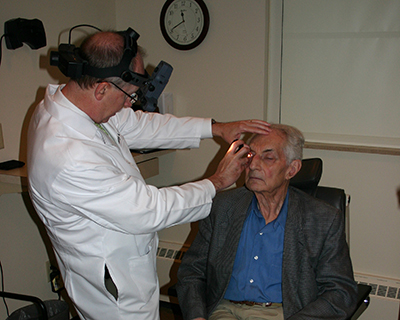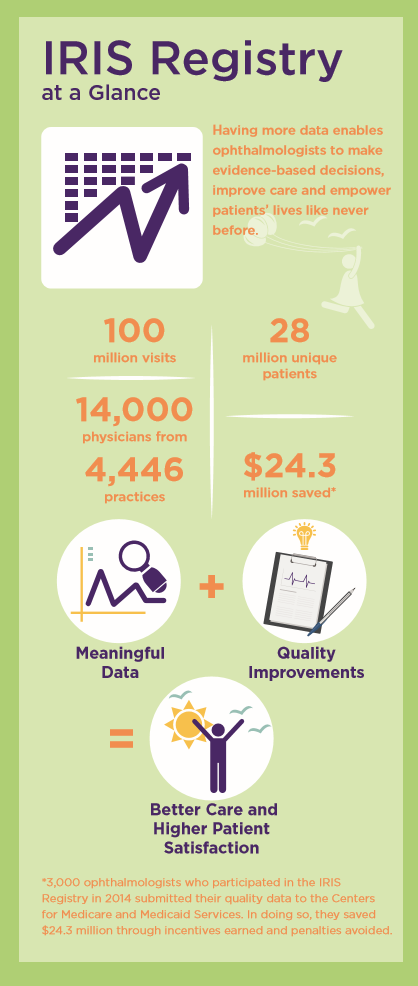Transforming Quality of Care With Big Data

“It’s hard for us to look at our data objectively,” said George A. Williams, MD. “The IRIS Registry has the potential to provide us with that objective feedback — and with that feedback, frankly, we can do a better job of taking care of patients.”
AN ELDERLY PATIENT waits in her ophthalmologist’s office. Always punctual, she arrived at 2:30 p.m. for her 3 p.m. appointment. She soon starts to wonder if she has been forgotten. At 3:10 p.m., she’s called in and expresses her disappointment at having to wait 40 minutes, and feels she isn’t getting the same quality of care as usual.
This scenario plays out more often than we might think. Often, patient satisfaction comes down to perceptions. It depends on the physician and his or her staff to communicate effectively with patients. But how do you know if it’s a regular pattern, and how can you cut down on reporting time in order to spend more time with your patients?
BIG DATA, BIG INSIGHTS
With the Academy’s IRIS Registry, physicians can measure the continuum of care from initial patient contact through intervention and follow-up. Monitoring patient interactions will help identify obstacles and understand patterns of communication as a factor in improving perceptions of care.
The nation’s first comprehensive eye disease clinical registry, this centralized data repository and reporting tool collects patient data and performs statistical analysis. Participating ophthalmologists can produce easy-to-interpret, national and inter-practice benchmark reports. Armed with this data, ophthalmologists can gain meaningful insights and make practice improvements.
reports. Armed with this data, ophthalmologists can gain meaningful insights and make practice improvements.
In just two years, the IRIS Registry has collected data from thousands of practices and physicians who saw millions of patients. These records allow us to extrapolate data in a fraction of the time it would have taken 10 years ago. “As the ophthalmology registry continues to grow, we will soon be able to answer critical clinical questions in days rather than years, and at a fraction of what large clinical trials cost,” said Russell N. Van Gelder, MD, PhD.
With this valuable data, physicians can much more effectively and efficiently monitor their performance. In the past, “patients have had to wait longer to see the doctor because of the extra time required for documentation, so the mere act of measuring quality created problems with quality as perceived by the patient,” said Robert E. Wiggins Jr., MD. “They not only rate the physician and staff lower when they’ve been waiting longer, but they also rate the quality of information that they receive lower in their overall experience of care.” With data from the IRIS Registry, physicians will be able to spend less time on documentation and more time with their patients, thereby improving their patients’ perceptions.
IMPROVED CARE — CLINICALLY AND INTERACTIVELY
For the first time, ophthalmologists have a data-driven tool to improve care. Investigators are making novel, population based observations and adding them to our scientific literature. And physicians are benchmarking their performance to improve their patient care, both clinically and interactively. “My perception of what I was documenting about patients regarding their examination and the information I was providing was a little different than the reality,” said Aaron P. Weingeist, MD. “Going back, using the registry, I was able to improve the way I was documenting and be more thorough to improve the quality that I’m providing to patients.”